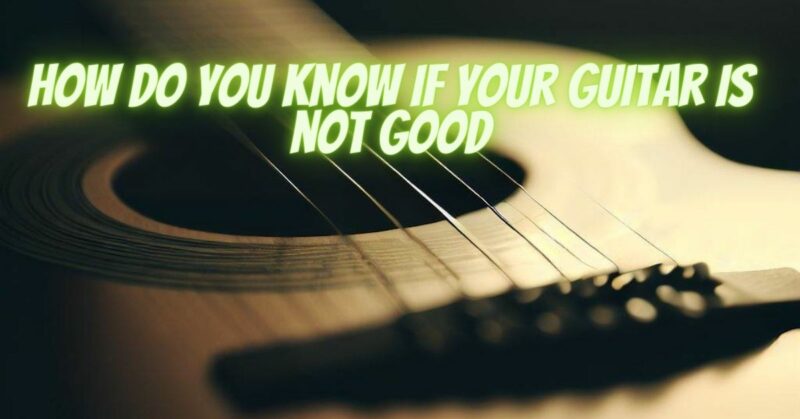For every guitarist, finding the right instrument is a vital step in nurturing their musical journey. However, there may come a time when you start to question whether your guitar is truly up to the task. In this article, we’ll explore some key indicators that can help you determine if your guitar is not meeting your expectations. Join us as we delve into the signs that may suggest it’s time to reevaluate your instrument.
- Playability Issues: One of the primary indicators that your guitar may not be up to par is playability. If you find it challenging to play smoothly, experience excessive fret buzz, or struggle to maintain proper intonation, these issues can greatly hinder your musical expression. A guitar that is not set up correctly or has poor craftsmanship may lead to such playability problems.
- Tone and Sound Quality: The tone and sound quality of a guitar are crucial aspects that can greatly impact your overall playing experience. If you feel that your guitar lacks depth, resonance, or clarity, it may be a sign that your instrument is not delivering the desired tonal characteristics. This can be due to inferior materials, poor construction, or simply a mismatch between your musical preferences and the guitar’s inherent sound.
- Sustain and Resonance: Sustain refers to the length of time a note continues to ring out after being played. A guitar with poor sustain may sound dull and lifeless. Similarly, if your instrument lacks resonance or fails to project sound effectively, it can impede your ability to make a strong sonic impact. These issues may arise from factors such as the guitar’s construction, wood quality, or even structural damage.
- Intonation Problems: Intonation refers to the accuracy of the guitar’s pitch along the fretboard. If you notice that certain notes or chords sound out of tune, even when the strings are properly tuned, it could be a sign of intonation problems. This issue can make playing with other musicians or along with recorded tracks a frustrating experience, and it typically requires professional adjustment to rectify.
- Physical Damage or Wear: Inspecting your guitar for physical damage or wear is another essential step in assessing its overall condition. Look for cracks, splits, or warping in the body, neck, or headstock. Check for loose or worn-out hardware, including tuning pegs, bridge components, and frets. Any significant damage or wear that compromises the guitar’s structural integrity or functionality should be addressed promptly.
- Lack of Inspiration: Sometimes, the most subjective but important indicator that your guitar is not good for you is the lack of inspiration it brings. If you find that you’re not excited to pick up your instrument, it doesn’t inspire you to create or explore new musical avenues, and it feels like a hindrance rather than a joy, it may be time to consider finding a guitar that resonates with your musical aspirations.
Conclusion:
A guitar that is not up to par can hinder your progress and limit your musical expression. Playability issues, subpar tone and sound quality, sustain and resonance problems, intonation issues, physical damage, and a lack of inspiration are all indicators that your guitar may not be meeting your expectations. If you encounter any of these signs, it may be worthwhile to consult a professional guitar technician or explore alternative instrument options. Remember, finding the right guitar is a personal journey, and investing in a high-quality instrument that matches your musical preferences can greatly enhance your playing experience and nurture your passion for music.


